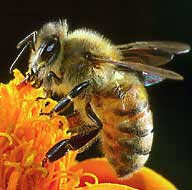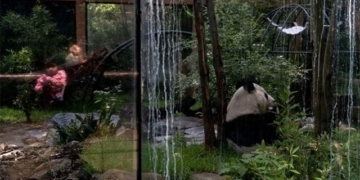Royal jelly has a milky white color, slightly yellow, and a mildly sour taste. It is very rich in nutrients due to its high protein and vitamin content. Bee pollen is the part of the flower’s stamens that bees collect while sucking nectar and bring back to the hive. It serves as an energy source, stimulates the nervous system, and reduces fatigue.
Royal Jelly
 According to some authors, royal jelly is a special substance secreted by the salivary glands of worker bees. Larvae fed with this substance become queens that live 50 times longer than worker bees, and it is also the food of the queen bee, hence the name royal jelly.
According to some authors, royal jelly is a special substance secreted by the salivary glands of worker bees. Larvae fed with this substance become queens that live 50 times longer than worker bees, and it is also the food of the queen bee, hence the name royal jelly.
Regular honey and royal jelly differ significantly. Regular honey lacks inorganic acids, dextrin, or simple sugars, containing primarily some sugars, organic acids, and digestive enzymes. In contrast, royal jelly contains less sugar and is richer in fats, proteins, and vitamins than regular honey.
In traditional Chinese medicine, royal jelly is described as milky white, slightly yellow, with a mildly sour taste, and is very nutrient-rich due to its high protein and vitamin content. Historically, when people mention royal jelly, they often think of its ability to enhance sexual function and treat impotence in men, improve erection and ejaculation, and increase both the quantity and quality of sperm. Recent studies have shown that royal jelly has many other effects, including:
+ Anti-aging, anti-cancer, and radioprotection.
+ Enhancing cognitive abilities and memory.
+ Strengthening the contractile function of the heart.
+ Promoting growth and development processes in the body.
+ Lowering blood pressure and actively preventing atherosclerosis.
+ Improving the hematopoietic function of the bone marrow.
+ Promoting the recovery of organs such as the liver, kidneys, and nervous system.
+ Notably enhancing sexual and reproductive capabilities, boosting the body’s resistance and immune system. At high doses, it can have a sedative effect and help prevent insomnia.
Usage: It can be consumed orally, taken sublingually, applied externally, or even injected intramuscularly. The most common method is oral consumption, with dosage varying based on the intended purpose:
Royal jelly should not be consumed alone; it is typically mixed with 1% royal jelly and honey or can be combined with white alcohol.
Dosage: For children under 5 years old: 5 mg/day; ages 5-10: 10 mg/day; over 10 years: 20 mg/day, divided into two doses in the morning and evening. The effects are noted after 4 weeks of consumption, with a treatment course lasting 6-10 weeks.
Storage: Keep in the refrigerator (in the freezer) for up to one year. Mix royal jelly with honey in a ratio of 5 parts royal jelly to 95 parts honey.
Bee Pollen
 Bee pollen is the part of the flower’s stamens that bees collect while sucking nectar and bring back to the hive. Many authors believe that bee pollen is an energy source, stimulating the nervous system and reducing fatigue.
Bee pollen is the part of the flower’s stamens that bees collect while sucking nectar and bring back to the hive. Many authors believe that bee pollen is an energy source, stimulating the nervous system and reducing fatigue.
The composition of bee pollen is similar to that of royal jelly, consisting of sugars, fats, high-quality proteins, and minerals – vitamins. These vitamins and minerals stimulate the activity of glands, invigorating and enhancing vitality. Researchers have observed that in Europe, during the honey-making season, beekeepers who breathe in a lot of pollen are more energetic than at other times of the year.
In traditional Chinese medicine, bee pollen is sweet and neutral, commonly used to treat conditions such as:
+ Dizziness, back pain, and knee fatigue.
+ Insomnia, poor appetite, and frequent nighttime urination.
+ Decreased sexual function, erectile dysfunction, and nocturnal emissions.
+ Extreme fatigue, restlessness, and irritability.
+ Premature ejaculation, infertility, and early menopause.
Recent studies have shown that bee pollen can help prevent several diseases such as:
+ Hypertension and atherosclerosis.
+ Diabetes.
+ Gastritis.
+ Hepatitis.
+ Reducing the risk of prostate enlargement.
+ Cancer prevention and enhancing sexual function.
Usage: Bee pollen is typically consumed naturally, mixed with hot water for drinking, soaked in alcohol, or blended with honey for use. Dosage: 5 grams divided into 2-3 doses per day.

















































